20 July 2016
Commissioned by SIR (Sculpture International Rotterdam), Jasper de Haan | ARCHITECTEN has been working hard with artist Susan Phlipsz and Vidisquare on the design of Seven Tears over the past months. A sound artwork based on the composition Pavane Lacrimae by Dutch composer Jan Pieterszoon Sweelinck (1562 - 1621). The Sweelinck who used to be on the ƒ25.00 note you know. Sweelinck in turn based his Pavane Lacrimae on the song Flow My Tears by his contemporary, composer John Dowland (1563 - 1626). This song by Dowland, made for lute and voice, is one of the first examples of the then 'trend' of melancholia.
Start of construction of artwork Susan Philipsz
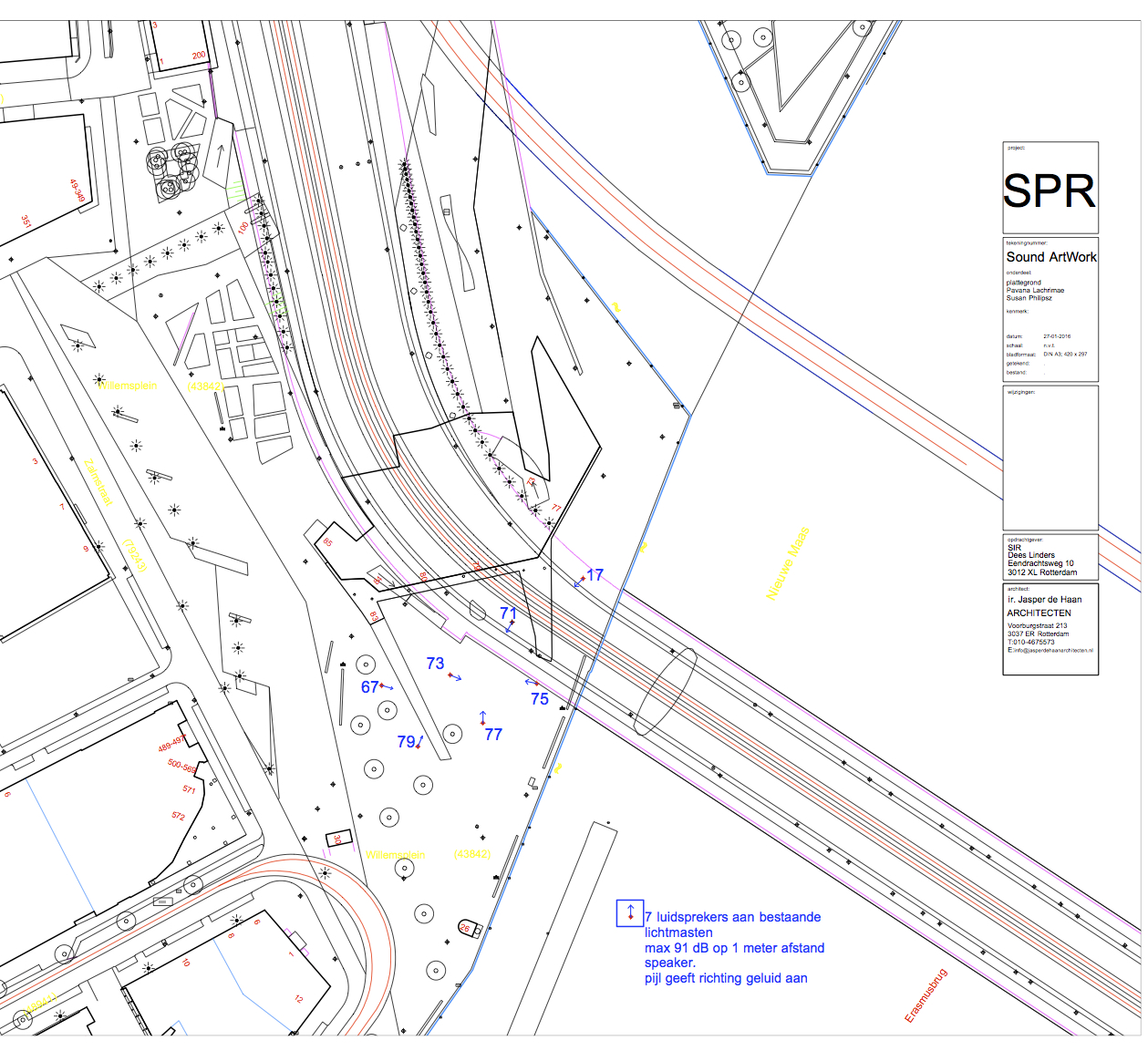
Susan Philipsz deconstructed the composition into seven separate tracks. It was our clean task to ensure that there would be seven speakers, on seven lampposts, on Willemsplein, under the Erasmus Bridge. In itself, a fairly straightforward task. Were it not for the fact that the seven tracks had to be exactly synchronised. And there was no budget for laying new cables between the light poles. Wifi was also not an option due to susceptibility to interference. Nor was other wireless data traffic, given the multitude of Marifoons and other electromagnetic interference (the bridge itself, the tram, ships, engines). In short, there had to be seven hard drives, with seven amplifiers and seven seawater-proof speakers. The challenge was to get all seven of these to start wirelessly together exactly at the same time. W-DMX, an idea by Machiel Kunst, was the magic word. W-DMX is a protocol widely used at concerts to control lighting effects. Here, we only use it to start all geludis files on all seven hard drivesm simultaneously.
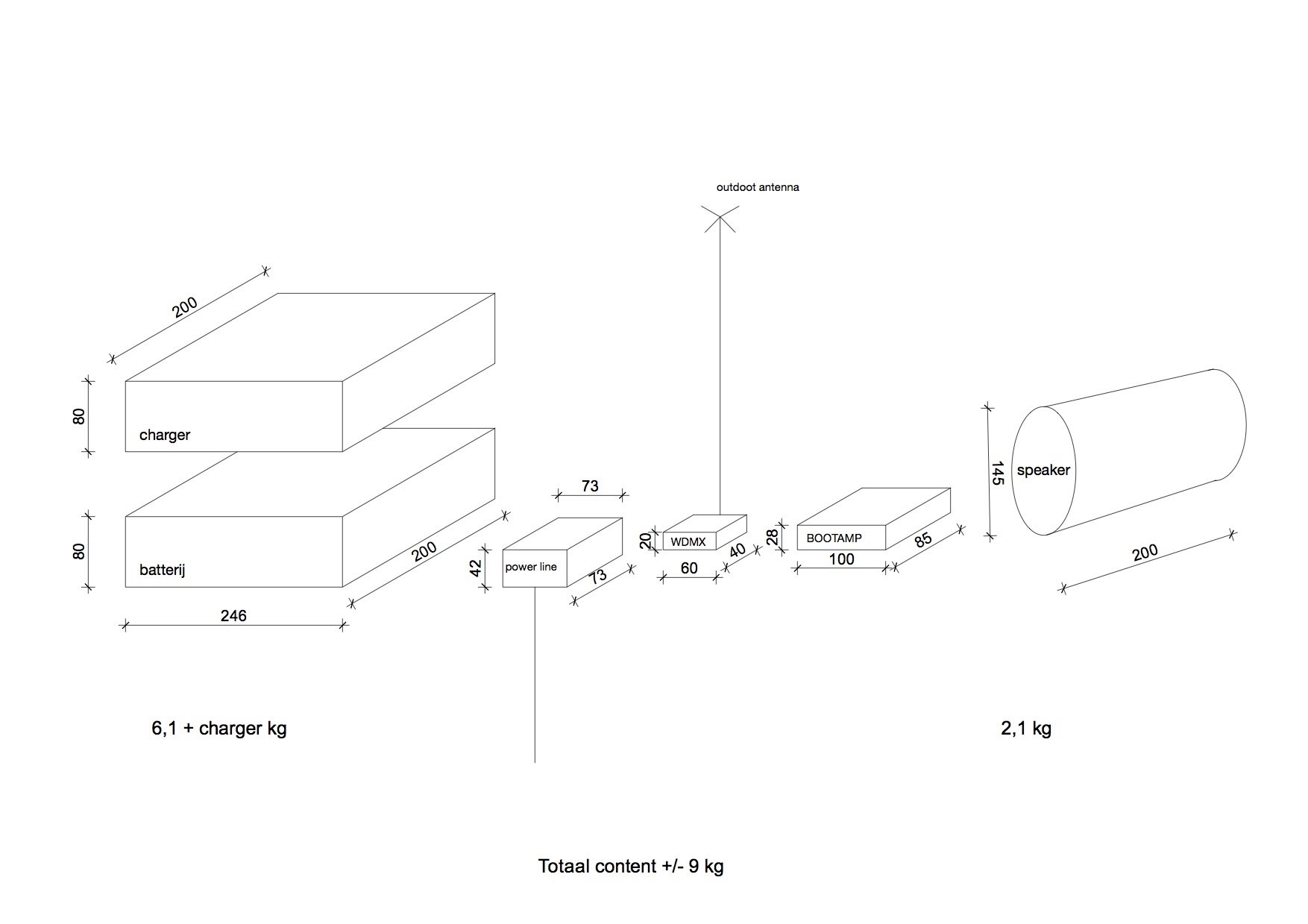
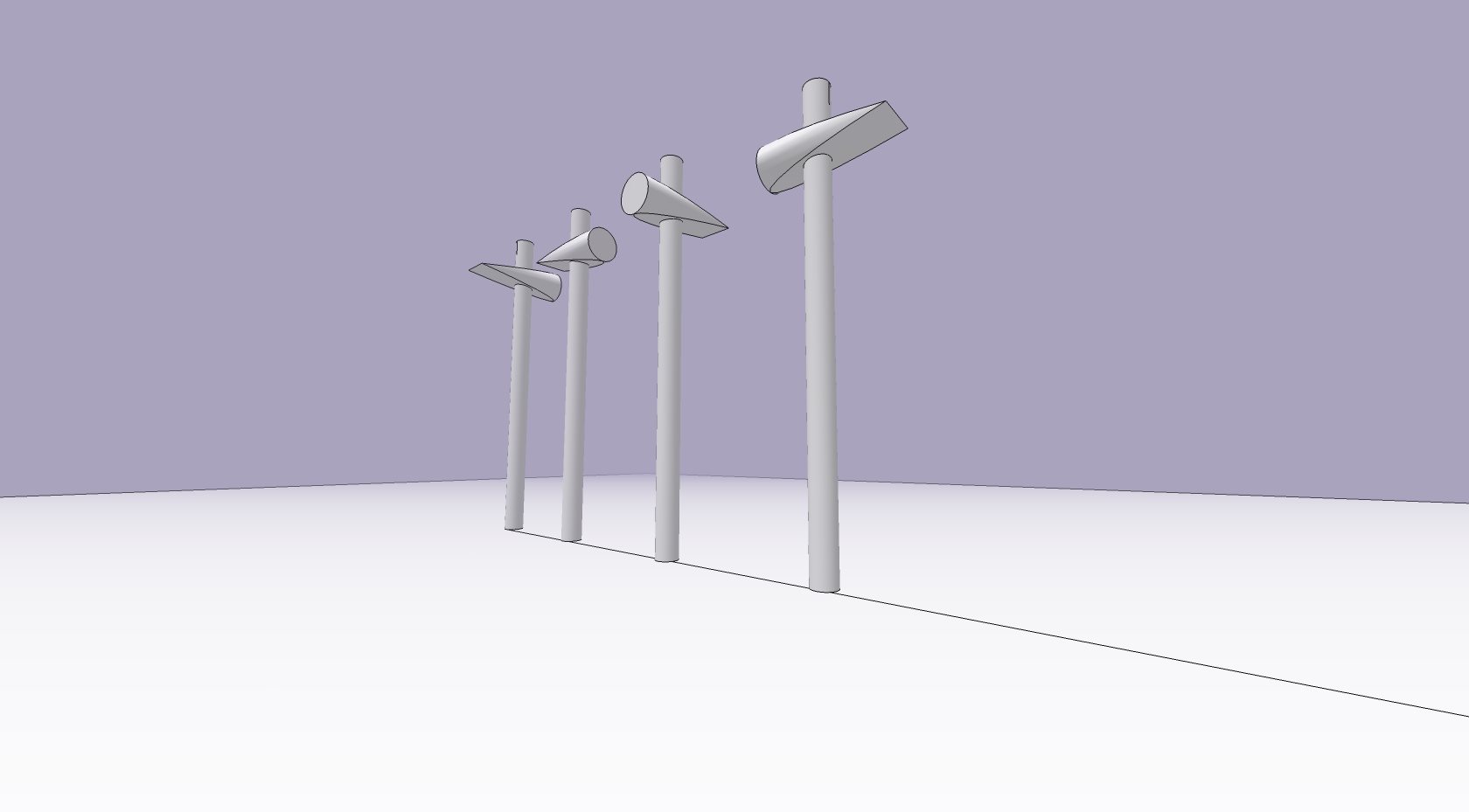
But then we weren't there yet. It turns out there are two kinds of lampposts in Rotterdam. One that always has power and one that only has power when the lamp is on in the dark. And you guessed it: the lampposts on Willemsplein only have power when it is dark and the lights are on. And then, of course, the artwork is off; it only plays during the day. The solution was a battery, a battery pack. But a very special one, one that was small enough to fit into a specially designed hufter-proof stainless steel housing with speaker. And one that could withstand temperature changes from -15 ºC to about + 65 ºC. Once we had sorted all that out, the first thing we did was make a prototype to see if it works. And we went to test it last 20 July.
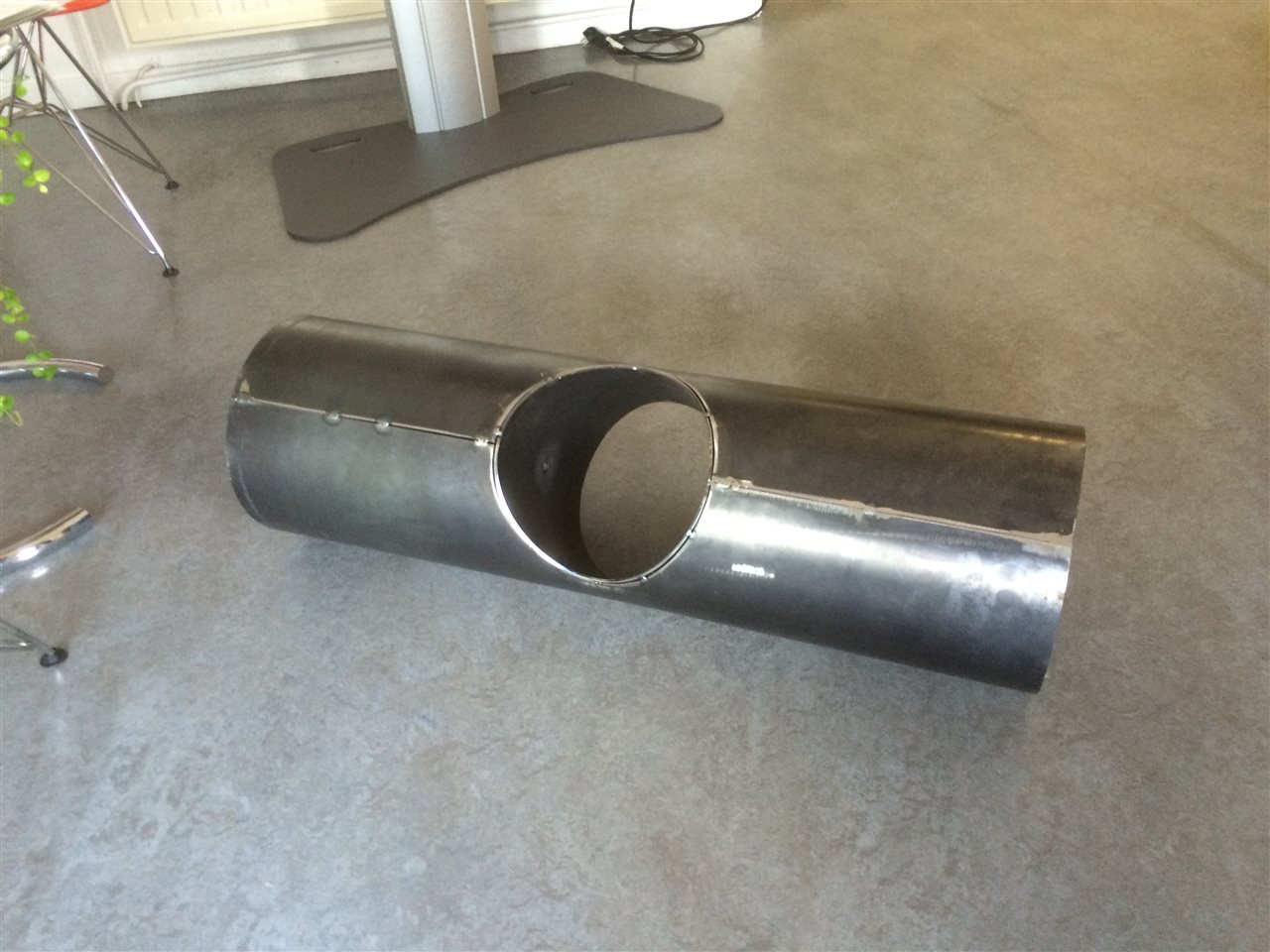

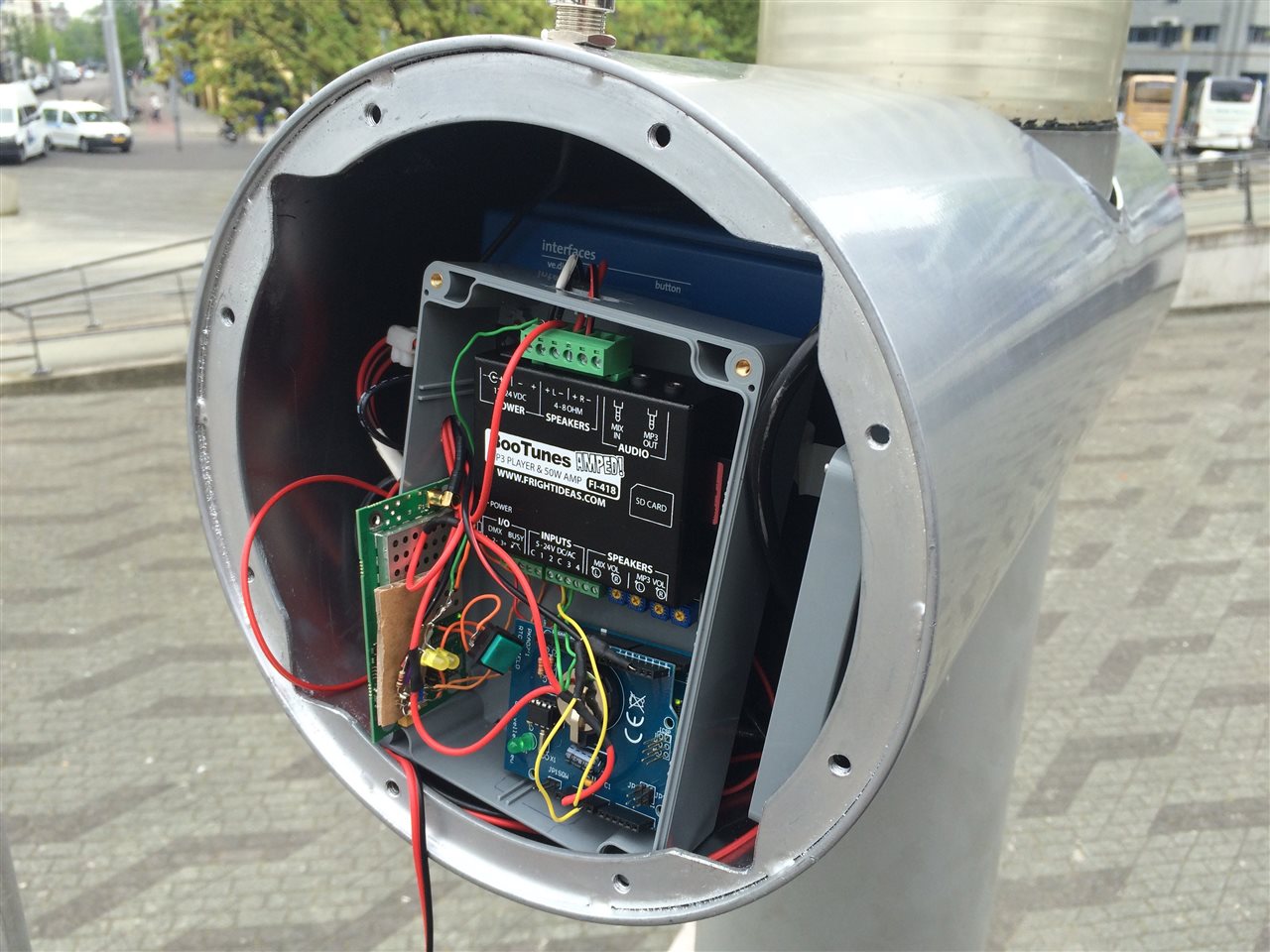
And yes, except for some loose wires, the prototype worked perfectly. Production of the seven real stainless steel ones can start! Opening sometime in spring 2017. We are looking forward to it!
